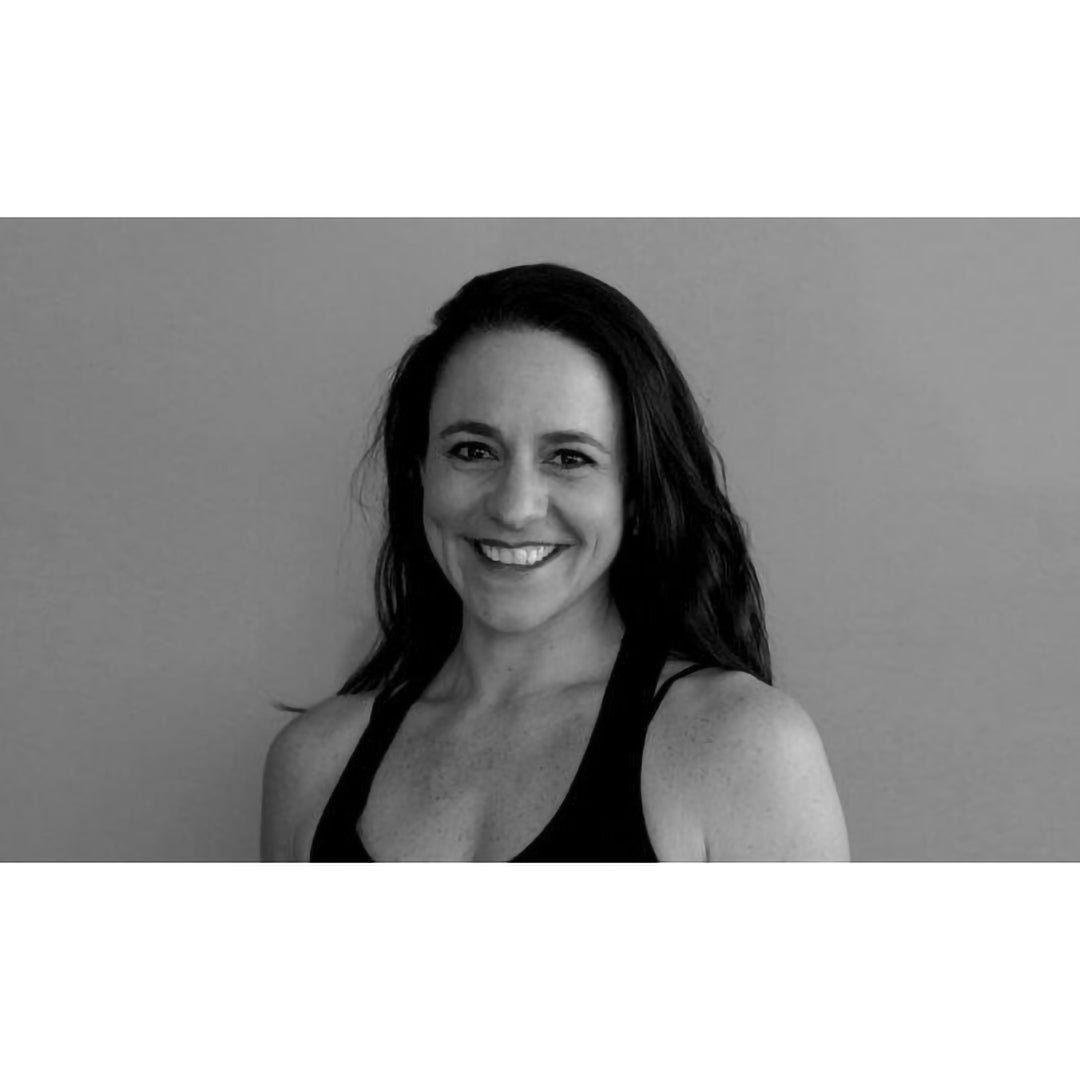Dr Courtney Conley – From Strong Foundations

The importance of strength training your feet
We take our feet for granted. There seem to be so many exercises and a myriad technical equipment to help us to maintain the fitness in every part of our body... except for our feet. Yes, I know, we use them anyway when we run, when we push them against a weight etc, but think about it; how often are we told ‘you need to strengthen your foot – except by a doctor after serious problems. And, in truth, I would argue not even then.
Courtney Conley is an internationally renowned foot and gait specialist, coming from a background in ballet and now in triathlon. These days she helps to run ‘GaitHappens’, a world-renowned specialist foot health consultancy, so she knows probably everything that there is to know about feet and the importance of strengthening them to carry out the functions they’re asked of every single day. When training in Chiropractic’s, Courtney and her contemporaries had a mere half a semester on the foot, being told only the basics. Everything else, she’s had to research and learn herself – both from personal experience as an athlete, and from her own desire to always find out more – to seek answers. She simply wants to know as much as is possible and the human foot so that she can give the best possible service to her long list of clients in Colorado and elsewhere, where she practices.
A personal journey of foot health and comfort
Working her way into the business of foot health, in 2 orthotic labs, and still involved in training, Courtney felt that more could be done to alleviate the common problems that both she and others were experiencing as athletes: numbness, tingling, and the more serious deformation of the foot. Looking specifically at how she could help in strengthening up the foot, Courtney experimented with health programmes targeting the foot, and slowly she noticed that things started to change – her feet become stronger and better equipped to cope with the rigours and pressures – literal and otherwise – that arose when wearing sports footwear. Taking the lessons that she was learning, Courtney worked with patients, being able to remove their orthotics so that the foot was more independent, as it should be, and the patients could function properly without their requirement.
Her simple mantra was that: ‘whilst you cannot modify the footwear you’re given for an activity; you can strengthen and alter the way in which your feet can adjust and cope with the activity that the shoes are necessary for, in order to participate.’

Wide feet and shoe restrictions
The foot is in Courtney’s opinion, a beautiful and complex, structural part of the human body. It’s the only place in the body where you can see issues without layering. You can easily see if something is amiss, and where the foot is changing shape. Knowing this, what you do before and after an activity is crucial to your foot health – yes, your foot health. Wide feet simply won't fit into a non-wide cycling shoe without causing issues, be it numbness, tingling, hotspots or worse. It’s a simple fact of round pegs and square holes, if you get the analogy. Too often, cyclists look at the style of the shoe and forget about how it will actually fit and function when their foot is squeezed into it. Cyclists, like many athletes, will buy shoes online, to save money, whilst dipping into the pain bank for their troubles.
Non-weight bearing is a big issue for cyclists and for others. Sitting on a bike for long periods of time – or at a desk in a modern office - the foot isn't getting the strength training that it requires to function properly, or to support you. The importance of cross training in our sporting lives, and yes, our general health regime, ensures that you do load the foot tissue, and you prepare the foot for the loads and activities that life will bring. If you don’t carry out a structured strength program for your feet, then things can start to change in the foot; important things like tendons. Tendons have to be loaded or they simply won’t work in the right way.
That tingling sensation may not be excitement
The most common diagnosis with cyclists is neuroma, and it’s very painful. Neuroma involves a thickening of the tissue around one of the nerves leading to your toes. This can cause a sharp, burning pain in the ball of your foot. You may have stinging, burning or numbness in the affected toes.
Despite this, as Courtney says, treatment is manageable, with the appropriate footwear, posts, spacers, exercises etc, and it’s what we here at Lake Cycling Shoes are the best in the world at. You need cycling shoes with a wide toe box shoe, and/ or toe spacers, so that the front of the foot and the toes have room to move freely and to breath – yes, to breath. When you compress the forefoot, you take away the stability of the foot. When you’re walking, 8x your body weight goes through forefoot. I am looking for the reference for you now. If you wanted to simply say, that the force through the forefoot is more than our body weight during a walking gait and is amplified even higher in a running gait. You can’t compress the toe, as you lose the integrity and strength of the foot, which is when adverse things form on the foot – by which time, the problem may then require a surgical intervention, all because of ill- fitting footwear and a failure to maintain foot strength.

Here’s a few numbers load through forefoot (from the report stated):
Jacob HA. Forces acting in the forefoot during normal gait--an estimate. Clin Biomech (Bristol, Avon). 2001 Nov;16(9):783-92. doi: 10.1016/s0268-0033(01)00070-5. PMID: 11714556.
Results. The flexor hallucis longus and brevis tendons exert about 52% and 36% body weight, respectively, and the peroneus longus muscle more than 58% body weight. The resultant force on the first metatarsal head amounts to about 119% body weight. The second metatarsal bone is subjected to a high bending moment with a resultant force of about 45% body weight acting on its head. The flexor digitorum longus and brevis forces are about 9% and 13% body weight, respectively.
Our latest Lake cycling shoes, such as the awesome CX333 and the new MX201 are designed for a wider foot, having a good toe box that conforms to the requirements that experts such as Courtney know are critical to our foot health. And, ultimately, a healthier foot will perform better, and you’ll stay comfortable all ride long.
The cycling Foot
The only offer for people in pain, in orthotics is generally a custom shoe or surgery. Both of these are thankfully avoidable, if you take the necessary steps beforehand. You need to have a program of foot strengthening as part of your general health and fitness regime, and you need to wear sports shoes that are properly fitted – preferably by one of our Lake Cycling Shoe partners and bike fitting experts. If you do have problem shaped feet, then our latest CX242 and MX242 off-road version offer an articulated panel design to the upper, with dual BOAs that can wrap each part of the foot separately, like a second skin.
Courtney has worked with several sporting shoe brands, developing foot friendly shoes, and she’s an advocate for Lake cycling shoes, wearing them herself, which she says was ‘a game changer!’
There are 4 layers of muscles in the foot, and lots to go wrong, and yet in general sporting rehab, there isn’t yet a recognized rehab program for the foot. From her perspective, there needs to be a ‘foot spectrum’ for sports. Her research and work with athletes have already shown that doing the right, tailored rehab will improve foot health and its ability to undertake activity. All patients got better with minimal footwear being used, rather than unnecessary footwear, often designed with aesthetics and form in mind rather than function and how the human foot needs to operate.
Wide toe box is critical
Within cycling shoes, as Courtney has found over the years, one thing is non-negotiable, and that’s the toe box. Cycling shoes, like all athletic shoes, need to have that space and to prioritize function over fashion. Over 50 percent of cyclists, in her opinion, are wearing the wrong shoes or incorrect sizes. There’s generally a failure to measure in-depth, with length being the common measure, and width and volume often missed by other brands.
Thankfully, here at Lake, we spend a long time training our shoe fitting experts, so that they understand the human foot and your own unique feet and can correctly wrap your cycling feet in our legendary Lake comfort. We’ve also spent time researching and developing the toe box, and other key aspects of our road cycling and off-road cycling shoes, so that we have a complete range for all cycle sport activities and all foot sizes and shapes.

Lake CX201 for performance style and ultimate comfort
The Lake CX 201 takes comfort and fit to the next level. It features our Comfort Plus last, with a wider toe box and a unique construction that offers a light weight and extremely breathable shoe. Complete with a generous forefoot platform, it accommodates a multitude of foot shapes. The Comfort Plus last has the most generous forefoot platform of all our CX lasts. This last will accommodate a spectrum of sizes and allow for toe splaying. It’s made for those riders who struggle to find an unrestricted shoe for the shape of their feet. It’s the widest cycling shoe on the market and is ideal for barefoot cyclists.
The key to cycling shoe comfort here at Lake is measuring each cyclists' feet and knowing the length, width, volume, shape of their sole and how it contacts the ground and the pedal. Once we know this, t we can give cyclists the best cycling shoes in the world, wrapping them in a second skin of performance and comfort – like the CX201.
If you’d like to know more about foot health and about Courtney’s work, why not visit her own website here: https://gaithappens.com/ and, maybe also take a trip to our specialist Lake Cycling Shoe partners and have your own feet properly measured.
Remember, strong performance starts with good foundations, and your feet lie at the base of it all, so give them the attention and care that they deserve – give them Lake, the world’s most comfortable high performance cycling shoes.







I have been a Competitive Road Cyclist for over 40 years. I recently purchased 2 pairs of CX332 Road shoes in the standard width ( I have very low volume feet ). I have many years experience custom fitting Ski Boots and Cycling shoes as well as Insole Arch support fabrication…I’ve been in custom made Rocket7 shoes (2/pairs) for 17 years perfectly fitting my feet! Lake is the very first Cycling shoe to fit me off the shelf since the early 1990’s! I just finished heat molding the heal cups, inserting my Orthotics and placing a medium size medial wedge on the interior portion of the heel cup..the results are spectacular! The closest fit and performance next to custom made! Chapeau Lake! Chapeau! Les Schroll
I am an 80 year old tourist, usually doing several 500 mile trips each year. My foot size is 9.5 EEEE. I experienced severe burning on most trips, and could only ride with biking sandals. I called Lake, and asked if you had anything to help. Your recommendation of the MX201 has been a life changer. Absolutely no pain and I love the BOA closure.
Leave a comment